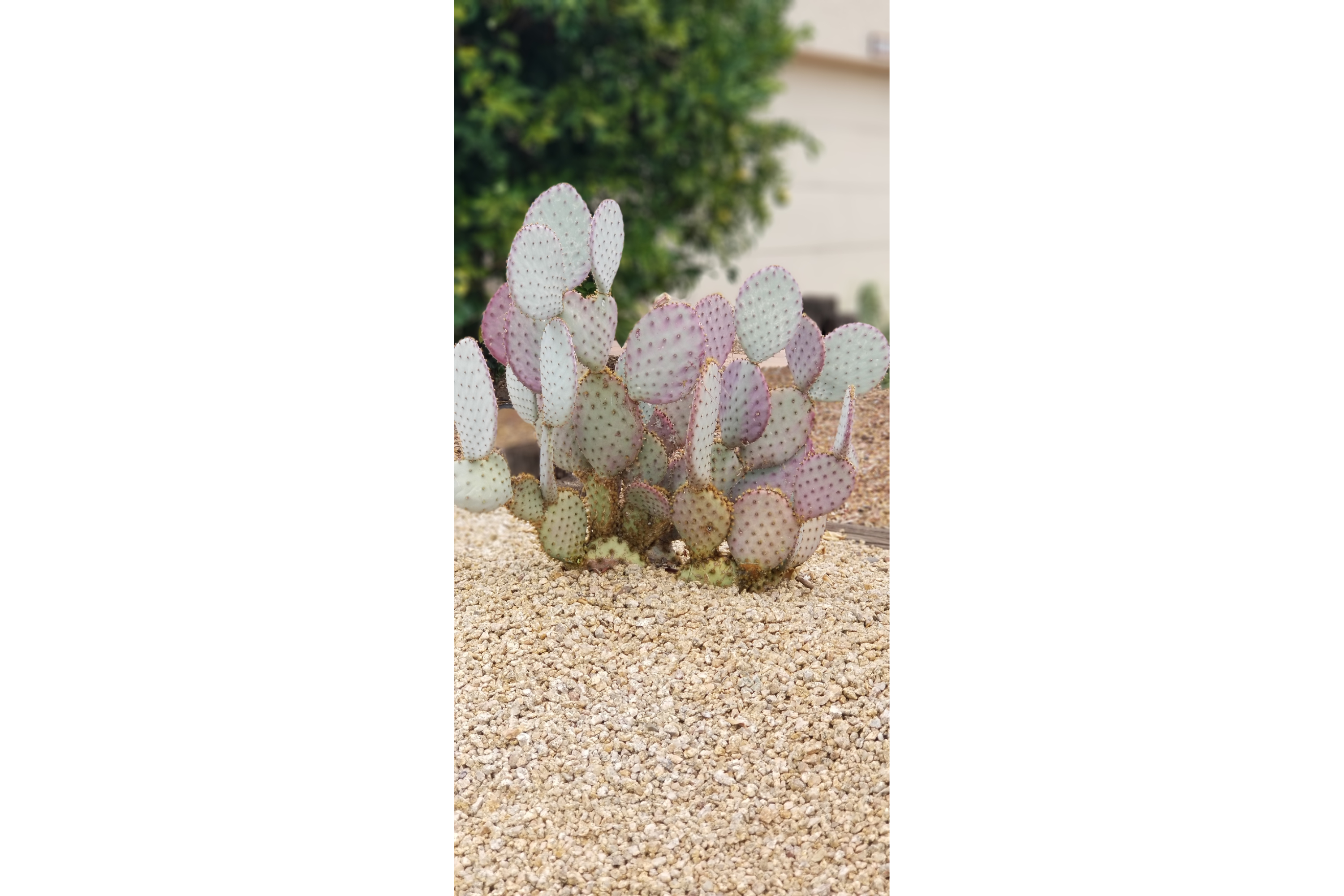Violet pricklypear
(Opuntia gosseliniana)

Description
Opuntia gosseliniana, commonly known as the violet pricklypear, is a species of cactus that is native to Pima County, Arizona in the United States and Baja California, Chihuahua, and Sonora in Mexico. Like most prickly pears, the pads are flat. Unlike most prickly pears, they have a violet, pink, or red tinge, hence the name. The cactus reaches mature heights of one to five feet and blooms either yellow or red. Different authorities disagree on the division of plants into Opuntia chlorotica, Opuntia violacea, Opuntia gosseliniana, Opuntia macrocentra, and perhaps others. To complicate the issue, there are numerous natural hybrids between species. The above-mentioned taxonomic issues complicate any attempt to describe the distribution of particular varieties or species. O. gosseliniana is especially known from Mexico, but has been reported from Arizona. Opuntia, commonly called prickly pear or pear cactus, is a genus of flowering plants in the cactus family Cactaceae. Prickly pears are also known as tuna (fruit), sabra, nopal (paddle, plural nopales) from the Nahuatl word nōpalli for the pads, or nostle, from the Nahuatl word nōchtli for the fruit; or paddle cactus. The genus is named for the Ancient Greek city of Opus, where, according to Theophrastus, an edible plant grew and could be propagated by rooting its leaves. The most common culinary species is the Indian fig opuntia (O. ficus-indica). O. ficus-indica is a large, trunk-forming, segmented cactus that may grow to 5–7 m (16–23 ft) with a crown of over 3 m (10 ft) in diameter and a trunk diameter of 1 m (1 yd). Cladodes (large pads) are green to blue-green, bearing few spines up to 2.5 cm (1 in) or may be spineless. Prickly pears typically grow with flat, rounded cladodes (also called platyclades) containing large, smooth, fixed spines and small, hairlike prickles called glochids that readily adhere to skin or hair, then detach from the plant. The flowers are typically large, axillary, solitary, bisexual, and epiperigynous, with a perianth consisting of distinct, spirally arranged tepals and a hypanthium. The stamens are numerous and in spiral or whorled clusters, and the gynoecium has numerous inferior ovaries per carpel. Placentation is parietal, and the fruit is a berry with arillate seeds. Prickly pear species can vary greatly in habit; most are shrubs, but some, such as Opuntia galapageia of the Galápagos, are trees.
Taxonomic tree:







